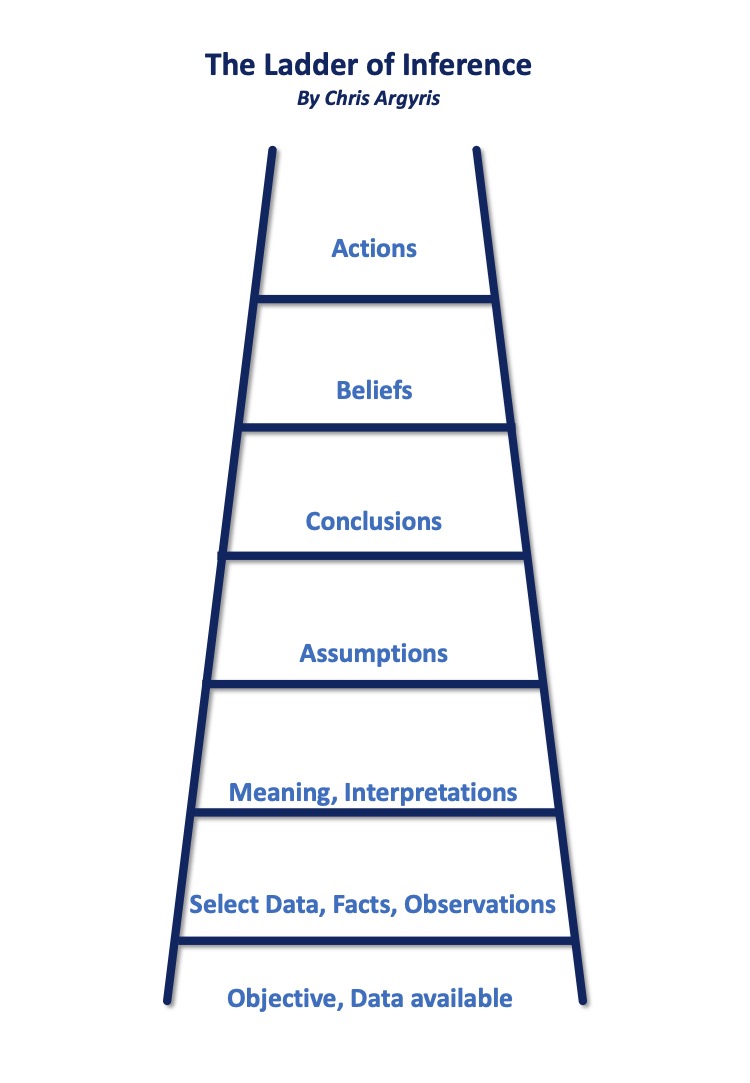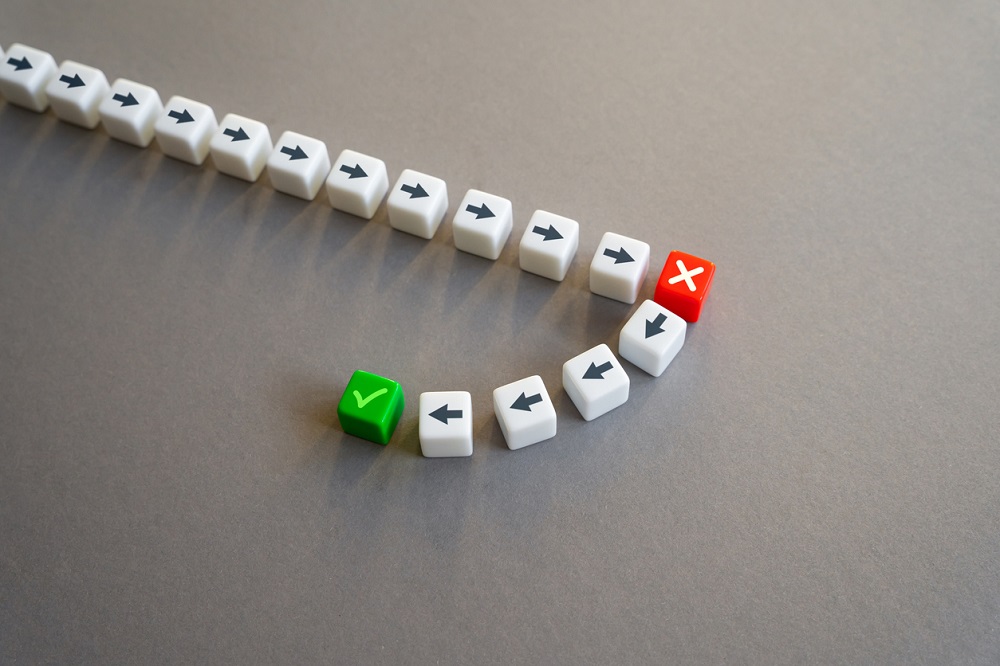We wouldn’t be human if we didn’t jump to conclusions. But when we test our assumptions beforehand, we can make better decisions, avoid unconscious biases, and adjust our initial reactions. Chris Argyris’ Ladder of Inference provides a structure to do this, making it a useful resource for anyone, especially mentors, managers and coaches.

About Chris Argyris
Chris Argyris was a respected US business theorist, a professor at Yale School of Management and Harvard Business School. He helped originate the theory and application of learning organisations. Argyris believed in treating employees respectfully – giving them extra responsibilities, a variety of tasks and the power to make decisions.
Why the ladder of inference matters

We’ve all jumped to the wrong conclusion at some stage in our careers. Many of us are under constant pressure to act now, without spending too much time thinking things through. This can cause conflict, especially when the conclusions drawn by another person about the exact same subject are completely different.
There is so much information and data coming towards us, it is impossible not to be selective. It is human nature. We would not be able to operate effectively without this capacity. Our brains are wired to interpret and process what is happening based on past experiences or known reference points. This is both vital for survival and can be problematic for us.
The best decisions are based on real and relevant information, which means you must feel confident in your reasoning and other people’s thinking to accept or challenge those decisions effectively. The Ladder of Inference slows us down, helps us stick to the facts and prevents the escalation of thinking that can often end in poor conclusions.
How the ladder of inference works
The Ladder of Inference speaks to the thinking and reasoning processes we often unconsciously go through to move from facts through to decisions and actions. Reality and facts sit at the bottom of the ladder, which we experience based on our beliefs and what has happened to us before.
Interpreting what they mean involves applying existing assumptions, sometimes without much real thought. We make conclusions based on these interpreted facts and assumptions, and create beliefs based on our conclusions. Then we take the actions we feel are correct, based on what we believe.
This sounds fine but it can be risky because our beliefs have such a profound impact on the realities we choose. We might ignore the facts altogether and miss out vital steps in the reasoning process, all without realising what we’re doing.

The Ladder of Inference teaches us to return to the facts, using beliefs and experiences positively instead of letting them restrict our judgement. It does so by using a more formalised step-by-step reasoning that can create more informed outcomes and actions. And that usually means fewer mistakes and less conflict.
This ordered, logical reasoning process can help us become objective, coming to shared conclusions more slowly and collaboratively. As you can imagine, it’s useful at every stage in the thinking process.
How to use the Ladder of Inference
First, where on the ladder are you? You might be at the early stages, maybe choosing your data or reality, or starting to figure out what it means. You might be either making or testing assumptions or coming to conclusions. Or, at the end of the process, you might be deciding what to do.
Whatever stage you’re at, you can analyse your reasoning by working your way down from the rung you’re on to discover the facts and assumptions that you’re really using. How are you using the data that you have selected to interpret what is going on? Have you missed something by only focusing upon a narrow slice of information only? Have you built upon these assumptions you made erroneously?
Every stage demands careful decisions around thinking and reasoning.
As you work your way up or down the ladder you can ask yourself questions. You can be curious and wonder about your responses. Why are you choosing this action? Have you missed out anything important? Which of your beliefs led to the decision? Is it realistic or mired in misconceptions? Are your conclusions sound? Have you been rigorous enough or have you taken an unconscious short cut? Are you using all the facts or are you missing something crucial?

You can make more considered decisions, defuse the emotional charge that is fuelled through your interpretation of why someone or something is happening. The Ladder of Inference provides you with a metaphor and a method to slow down, consider the situation and potentially change your responses by doing so.
Gaining a deeper insight into your self
This process, where you’re able to check your own reasoning, will ultimately reveal some of your personal response pitfalls. You will not be alone; we all have them!
Maybe you’re someone who tends to quickly jump to conclusions and so only looks at part of the picture. Perhaps you form illogical beliefs early on or your emotions get the better of you. Possibly you have a strong cognitive positive or negative bias that makes it hard to come to measured, sound decisions. It all seems to just happen, before you realise what is going on.
The good news is that it doesn’t need to stay that way. When you recognise your tendencies, you can nip them in bud and make changes for the better. Getting in the habit of applying the Ladder of Inference can make a real difference.
About us:
We create the space for leaders to step back, think clearly, and navigate complexity with confidence. By sharpening the narrative that drives decisions, teams, and performance, we help leaders move forward with clarity and impact. Our approach blends deep listening, incisive challenge, and commercial focus—strengthening leadership at every level, from business transformation to boardroom decisions.
“We share resources that help coaches deepen their practice and expand their impact. The articles on this site are designed to spark fresh thinking, offer practical tools, and support the continuous growth of coaches at every stage. “
Jude Elliman
Founder
Our Core Approach:
We work with leaders to sharpen their thinking, strengthen their leadership, and navigate complexity with confidence. Our approach is built around three core areas:
Narrative Coaching – Working with the stories that shape leadership, teams, and organisations.
Commercial Focus – Cutting through complexity to drive clear, strategic decisions.
Challenge & Space – Asking the right questions while creating the space to reflect and grow.
Through this, we help leaders drive transformation, align teams, and make high-stakes decisions with clarity and impact.
